If you’re looking for practical and compassionate senior cat tips, you’re in the right place. As your beloved cat grows older, their needs begin to change—sometimes in subtle ways you may not notice at first. Senior cats (typically age 10 and up) require extra care, attention, and a lot of love to help them stay comfortable, healthy, and happy in their golden years.
This article is not meant to provide medical advice. We’re simply sharing what we’ve learned through personal experience, research, and conversations with other cat lovers and veterinarians. Every cat is unique, and what works for one might not work for another. Always consult with your veterinarian when it comes to your pet’s health and specific needs.
That said, we hope this guide offers insight, comfort, and helpful ideas as you care for your aging feline friend. Whether you’re a long-time cat parent or new to caring for senior pets, these tips are here to support you on your journey.
Table of Contents
- Regular Vet Checkups
- Switch to Senior Cat Food
- Watch Their Weight
- Provide Soft, Warm Beds
- Keep Their Litter Box Accessible
- Play, But Gently
- Monitor Grooming Habits
- Adjust the Home Layout
- Show Extra Love and Attention
- Watch for Silent Symptoms
- Conclusion
✅ 1. Regular Vet Checkups
One of the most important things we’ve learned in caring for senior cats is the value of regular vet checkups. As cats age, they tend to hide signs of illness—sometimes until it’s too late. That’s why bringing them in for routine health screenings, at least twice a year, can make a huge difference.
In our experience, early detection has been key. Things like kidney disease, arthritis, dental issues, or even high blood pressure can quietly develop in older cats without obvious symptoms. A blood test, urinalysis, or physical exam can help identify these issues before they become serious.
It’s not just about preventing illness, either—these checkups are also a chance to ask your vet questions, track weight changes, and adjust care routines as needed. Every time we leave the clinic, we feel a bit more reassured and better equipped to give our cat the comfort she deserves.
Again, we’re sharing this based on personal experience and what has helped our own cats. Every pet is unique, so always follow your vet’s guidance for what’s best for your feline friend.
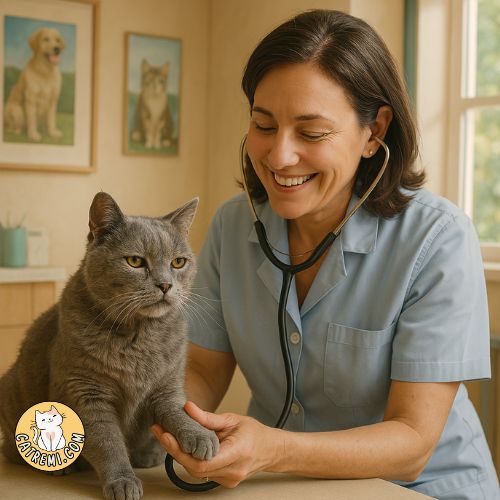
✅ 2. Switch to Senior Cat Food
One of the biggest shifts we noticed as our cats aged was their changing dietary needs. Older cats often become less active, which means they don’t burn calories like they used to—but their bodies still need high-quality nutrition to stay strong and healthy.
After talking with our vet and doing some research, we decided to switch to food specially made for senior cats. These formulas usually have lower fat and calorie content to prevent weight gain, while still being packed with essential nutrients like omega-3 fatty acids (for joint and brain health), glucosamine (for mobility and joint support), and taurine (for heart and vision health).
Another thing we discovered is that senior cats may have more sensitive stomachs or dental issues, so texture matters too. We tried different types—soft pâté, smaller kibble, even warmed-up wet food—to see what our cat preferred. It took a little trial and error, but once we found the right one, we noticed improvements in her energy, coat shine, and digestion.
Of course, every cat is different. What works for one might not work for another. We’re just sharing what helped us feel more confident in supporting our cat’s aging body through food. If you’re considering a diet change, it’s always a good idea to chat with your vet and make the switch gradually.
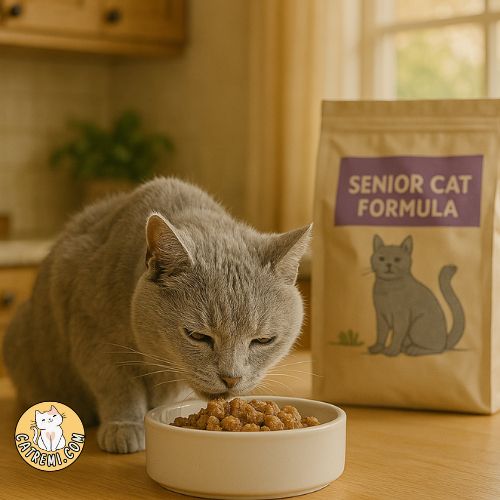
✅ 3. Watch Their Weight
As our cats grew older, we realized that maintaining a healthy weight became more important—and more challenging—than ever. Unlike kittens or active adult cats, seniors tend to move less, sleep more, and may gain weight even if they’re eating the same amount as before.
We learned that obesity in senior cats can increase the risk of serious health issues like diabetes, arthritis, and even heart problems. At first, we didn’t think much of the slight belly forming around our cat’s midsection. But during a routine checkup, our vet mentioned the importance of keeping an eye on her Body Condition Score (BCS)—a simple scale that helps assess if a cat is underweight, ideal, or overweight based on how easily you can feel their ribs and spine, and whether there’s a noticeable waistline.
From there, we started practicing portion control. Instead of free-feeding like we used to, we measured out meals and tracked what she was actually eating. We even used a small kitchen scale to get more consistent results (and discovered we were overfeeding without realizing it!).
Watching your cat’s weight doesn’t mean putting them on a strict diet—it’s more about finding balance. Small changes like reducing treats, switching to lower-calorie senior food, or encouraging gentle play each day can help them stay in shape without stress.
Again, this is just our experience. Every cat’s metabolism and health history is different, so be sure to work with your vet to find what works best for your feline friend.
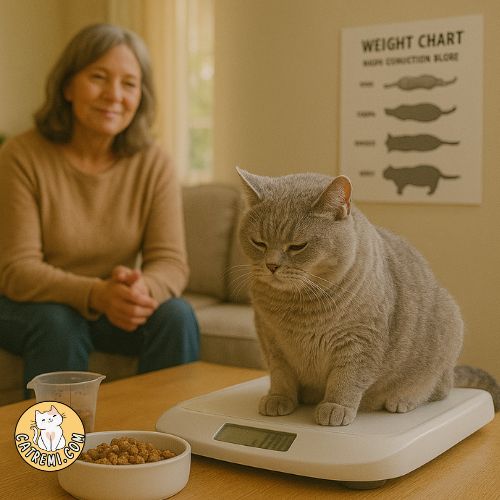
✅ 4. Provide Soft, Warm Beds
One of the most touching things we’ve learned in caring for senior cats is how much a soft, warm place to rest can improve their daily comfort. As cats get older, they may start to experience joint stiffness, arthritis, or just general fatigue, especially after a nap or during colder months.
We noticed our senior cat started avoiding her old favorite spots—like the windowsill or the top of the couch. Instead, she would curl up on blankets on the floor or find sunny patches in the house. That’s when we realized she needed something gentler on her joints.
We tried out a few options and eventually found that orthopedic cat beds made with memory foam gave her the most relief. These beds help distribute weight evenly and reduce pressure on sensitive joints and bones. On colder days, we added a heated pet pad or chose self-warming beds that reflected her body heat. The change was almost immediate—she started sleeping longer and seemed more relaxed overall.
Placing the bed in a quiet, draft-free area also helped. We made sure her favorite bed was easy to climb into, especially since jumping was no longer her strong suit.
Again, every cat is different—but if your feline friend is getting up there in years, investing in a cozy, warm resting spot can be one of the simplest and kindest things you do for them. It’s not just about comfort—it’s about dignity, rest, and love.
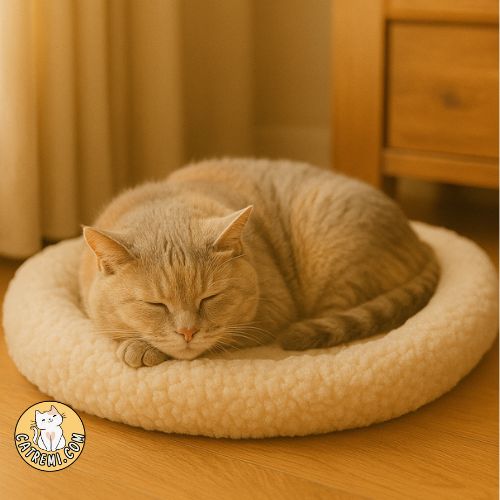
✅ 5. Keep Their Litter Box Accessible
As our cat got older, we began to notice subtle signs that everyday tasks were becoming harder for her—including using the litter box. What used to be simple, like hopping over a tall litter box edge or navigating stairs to get to it, started to look like a struggle.
Senior cats often deal with arthritis, joint pain, or reduced mobility, which can make climbing, jumping, or even squatting uncomfortable. That’s why one of the most helpful things we did was re-evaluate the litter box setup.
We replaced her old high-sided box with a low-entry litter box, making it easier for her to walk in and out without lifting her legs too high. We also moved the litter box to a quiet, easy-to-access spot on the main floor, so she wouldn’t have to climb stairs or walk too far to reach it—especially important during the night or colder months when movement is slower.
We also made sure the box stayed clean and odor-free. Older cats can be more sensitive to smells, and avoiding the box due to discomfort or bad smells could lead to accidents or stress.
These small changes made a big difference in her comfort and confidence. Watching her use the litter box without hesitation again gave us a sense of relief—and reminded us how meaningful even the tiniest adjustments can be when it comes to supporting our aging pets.
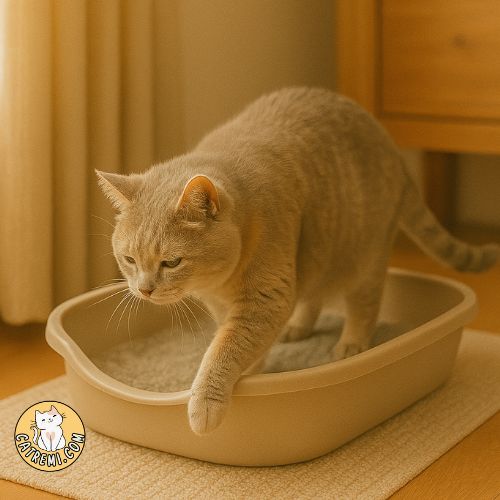
✅ 6. Senior Cat Tips for Gentle Play and Mental Stimulation
One of the things we’ve come to appreciate even more as our cat has aged is the value of gentle playtime. While she may no longer pounce like she used to or chase after feather wands at lightning speed, the desire to engage and connect is still very much there—just in a different way.
We’ve found that even a few minutes of slow-paced, low-impact play each day helps keep her mentally stimulated and emotionally content. Whether it’s following a string across the floor, batting at a soft toy, or simply watching moving objects from the window, these small moments spark curiosity and joy in her eyes.
At first, we worried that she wasn’t interested in play anymore—but we came to realize it wasn’t that she didn’t want to play, it was that her body had changed. So we adjusted the way we played with her. No more fast or jumping games—just gentle, thoughtful movements, soft toys, and lots of encouragement.
Sometimes we even talk to her while we play, and it becomes less about “exercise” and more about bonding. It’s amazing how these short, quiet sessions have brought us closer and brought out her personality in ways we hadn’t seen before.
Every senior cat is different, of course. But we hope that by sharing our experience, others will be inspired to keep playing—just with a little more patience, love, and softness.
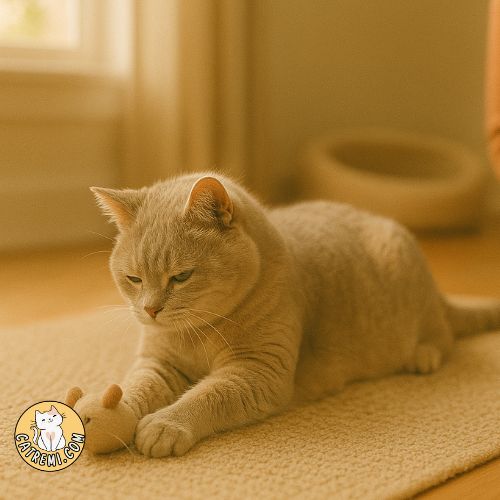
✅ 7. Senior Cat Grooming Tips You Should Know
One of the most subtle but meaningful changes we noticed in our senior cat was in her grooming habits. She had always been so meticulous—spending long, peaceful hours grooming her fur and keeping herself clean. But as she got older, we saw that she was grooming less and less.
At first, we thought maybe she was just getting lazier with age. But over time, we realized it might be something more. Senior cats who stop grooming as much may be experiencing pain, stiffness, or even emotional distress. Things like arthritis can make it hard for them to twist and reach certain spots, and depression or cognitive changes can reduce the motivation to groom altogether.
When we started gently brushing her a few times a week, not only did her coat start looking better, but she seemed more relaxed and connected. It became a quiet bonding ritual—just a few minutes of brushing, checking for any tangles, mats, or dry skin, and giving her soft praise as we went.
We also discovered that brushing wasn’t just about appearance—it was about comfort. Removing loose fur, keeping her coat smooth, and stimulating the skin helped her feel better overall. And it gave us a chance to notice little things—like lumps, scabs, or irritated areas—that we might have missed otherwise.
This simple routine reminded us that even the smallest acts of care can mean the world to our older companions. If your senior cat is grooming less, it might be their quiet way of asking for help. Being there for them in these moments has been one of the most tender parts of our journey together.
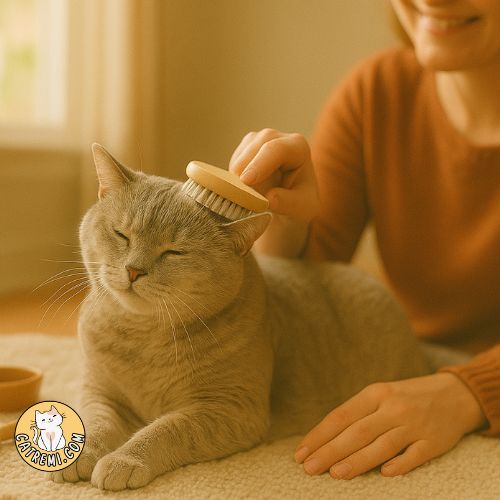
✅ 8. Adjust the Home Layout
As our cat entered her senior years, one of the most helpful (and honestly eye-opening) changes we made was adjusting the layout of our home to better suit her aging body.
We didn’t realize it at first—how even small things like jumping onto a couch, climbing stairs to get to her favorite window perch, or walking across a slippery floor could become genuine obstacles. But we started noticing subtle signs: she hesitated more before jumping, sometimes gave up altogether, and preferred staying in one spot for hours, even when it wasn’t the most comfortable.
That’s when we decided to make a few simple but thoughtful changes.
We added a ramp near her favorite chair, and she started using it almost immediately. We placed soft rugs or padded mats in areas where the floor was too hard or slippery. We moved her food, water, and litter box to easily accessible spots—on the same floor, close to where she naps most often—so she didn’t have to go far when she was tired or stiff.
These little adjustments made a huge difference in her mood and movement. She became more willing to explore again, and we could tell she felt more confident in her own space.
It wasn’t about making the home perfect—it was about removing little barriers that we hadn’t even noticed before. Every senior cat has different needs, but we’ve learned that small shifts in the environment can lead to big shifts in comfort and well-being.
We share this not as experts, but as fellow cat companions who want to make our furry friend’s life just a little easier, one step—or ramp—at a time.
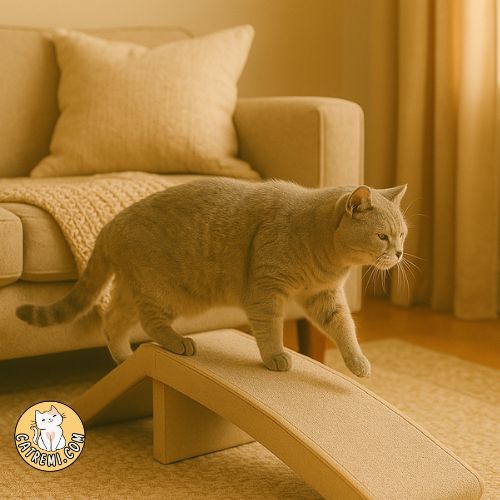
✅ 9. Show Extra Love and Attention
One of the most surprising—and beautiful—things we’ve experienced as our cat aged was how her way of expressing affection began to shift. She used to be fiercely independent, the kind of cat who’d cuddle only on her terms (usually when it was least convenient for us). But as the years passed, we started to notice something change.
Sometimes she became more clingy, following us from room to room, meowing softly for attention, or curling up beside us more often than before. Other times, she seemed more withdrawn, sleeping in new corners of the house or turning her head away when we tried to pet her. At first, we worried—was something wrong? But after learning more and talking to others, we realized: both behaviors are completely normal in senior cats.
Just like people, aging cats can experience a range of emotions—loneliness, confusion, increased need for reassurance, or simply a stronger bond with their humans. They might seek more comfort, or want more solitude. Either way, what they need most is patience, presence, and love that honors their rhythm.
For us, this meant slowing down. Sitting quietly with her even if she didn’t want to cuddle. Letting her initiate affection instead of reaching out too quickly. Speaking softly. Keeping a calm routine, feeding her at the same times, and giving her little “check-in” moments throughout the day—just to let her know she’s not alone.
These small acts of attention didn’t just help her feel safer—they deepened our connection in a way we didn’t expect. We came to cherish those quiet glances, the soft head-butts, and even the silent presence of her curled up nearby.
So if your senior cat is acting a little different—don’t worry. They’re simply asking for love in their own language. Be there. Be gentle. And let them guide the way.
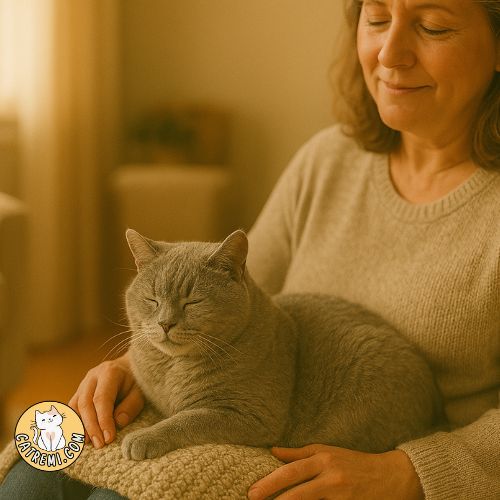
✅ 10. Watch for Silent Symptoms
One of the most humbling lessons we’ve learned from living with a senior cat is this: they won’t always tell you when something’s wrong. In fact, they often try to hide it.
Cats are naturally stoic creatures. They instinctively mask pain or discomfort—especially as they age—making it easy to miss early signs of illness. For us, it wasn’t until we noticed the smallest changes that we realized something wasn’t quite right: she wasn’t eating with the same excitement, started using the litter box less frequently, and began sleeping in unusual places. None of it seemed alarming at first… until we looked back and saw a pattern.
That’s when we started keeping a cat health journal—just a simple notebook where we recorded daily habits like appetite, water intake, litter box use, energy levels, and even mood. It helped us spot trends that we might have brushed off otherwise. And when we went to the vet, having this record made it so much easier to explain what we were seeing.
This practice didn’t just give us clarity—it gave us peace of mind. We weren’t guessing anymore. We were paying attention, gently and consistently, in a way that respected her dignity while protecting her health.
We’re sharing this because sometimes, caring for a senior cat isn’t about grand gestures—it’s about the quiet moments of observation, the notes we jot down at night, and the trust we build by being present.
If you’ve noticed even small changes in your aging cat—don’t ignore them. Sometimes, what seems silent is actually your cat speaking the loudest.
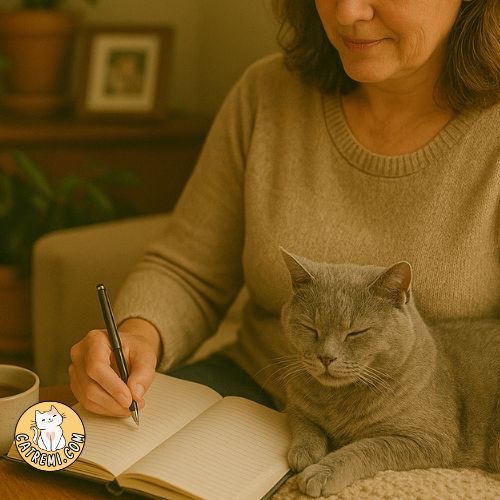
🐱 Conclusion
Caring for a senior cat has taught us more about love, patience, and presence than we ever expected. These quiet, golden years are full of small changes—some joyful, some challenging—but all of them meaningful.
What we’ve learned is that it’s not about doing everything perfectly. It’s about showing up. Watching closely. Adjusting a little at a time. Whether it’s switching to softer food, adding a ramp near the bed, brushing them gently, or simply sitting quietly nearby while they nap—every small act of care matters.
Senior cats have a quiet wisdom about them. They may move slower, play less, or sleep more, but their hearts still seek connection. And when we take the time to meet them where they are—with softness, patience, and understanding—they give us something priceless in return: trust, comfort, and unconditional love.
We’re not experts—just fellow cat lovers sharing what’s worked for us in hopes that it brings comfort to you and your feline friend. Because in the end, they’re not just pets. They’re our companions, our healers, our family. And with the right care, they can live not just longer lives—but happier, more peaceful ones, too.
Here’s to every purr, every soft blink, and every quiet moment shared. May you and your senior cat walk this journey together with love.
Learn more from the American Association of Feline Practitioners about caring for aging cats.

Pingback: Senior Cat Nutrition: A Complete Guide to Health and Happiness in Their Golden Years